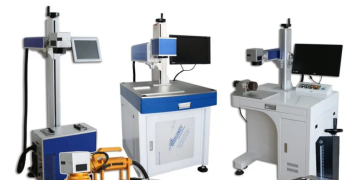The COVID-19 pandemic has put distributed work into the focus light even though it existed for years. Many people have been working off-site at least once a week well before the pandemic appeared. The numbers are now ascending, as PwC found 72% of workers in favor of continuing remote work when things become normal.
This is good news in so many ways. Being part of a distributed workforce comes with a unique set of challenges, but it also allows one to live a happier and healthier lifestyle. People involved in remote work also tend to stay longer in a company than the office workers.
The challenge for remote managers is to secure employee productivity. The lack of office norms and constraints can loosen employee engagement and temp to binge Netflix, scroll social media, and keep away from workplace responsibilities.
To get the most from your distributed team, follow these four benchmarks:
-
Assess Productivity
Productivity is a complicated metric to figure. Both the employees and managers must reflect on this before establishing monitoring protocols. The average U.S. employees are working three hours more a day during the pandemic, increasing their total work time by 40%. The extra efforts are causing people to deal with unrestrained burnout at an extraordinary and concerning level.
In June 2020, half of the U.S. workers reported feeling exhaustion from remote work. So you can see, productivity assessment is as important for avoiding inhuman work schedules as it is for keeping the distributed workforce on track.
To achieve this, try CloudDesk® remote employee monitoring software. This affordable platform helps to measure performance by showing productive and idle times. It enables you to keep employees engaged at work by sending periodic pop-ups as well.
Employees also get to work flexible time with this tool by pausing the time clock on demand. This option does not only allow people to work flexible time, but also helps them to attend personal tasks without taking a day off. Try the 14-day demo of this tool to get a better understanding.
2. Engagement and collaboration within the distributed workforce
Remote employees have been facing the toughest situation throughout the pandemic. It requires managerial and co-team communication to make them effective at work. You have so many platforms for communication within your reach, but their core job is more or less the same.
A good tactic is to do morning and midday check-ins with employees- it helps them stay connected to the company and one another.
Gallup found in a survey that employees emphasize several leadership qualities which inspire them for the best work, such as:
- Trust.
- Compassion.
- Stability.
- Hope.
The communication metrics that monitoring software produces can help organizations to best assess employee commitment and, by extension, productivity at work.
3. Big Data Trends
Specialized monitoring may feel like invasion and domination, but it certainly helps reveal important metrics, like workflow best practices, office norms and cultures, etc. Many employees even use big data trends as a source for behavioral change for better outcomes.
The implication of this data can be extended to communicate organizational norms and best practices, standardize work habits, and teach common productivity detractors. You have to be careful with big data trends, as too much implication of it often causes backfires.
4. Cyberthreats
Distributed workforce can cause cyber threats for both personal and business data. To secure the environment, adopt remote employee monitoring software, track employee engagement, and prevent potential threats, like phishing scams. Also, provide real-time training about the best practices of remote-based work.
This will provide a clearer understanding of potential risks to your distributed workforce and they will be ready to secure all the data.
Benchmarks matter in todays’ remote working environment. If you focus on the wrong ones, you will cause more harm than good. But when things are done right, your organization can support the team in the best way possible and lead to better outputs across the board. Follow these benchmarks to survive in todays’ challenging environment, and help your organization flourish today and tomorrow.





























































